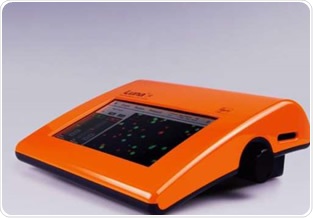Yeast is a very important organism in genetics and cell biology research. Together with its unicellularity, its small genome size and low number of genes make it an invaluable modelling system, particularly for the study of cell cycle regulation and signal transduction.
Yeast breaks down carbohydrates into two products: alcohols and carbon dioxide. The former is used for brewing alcoholic beverages such as wine and beers, and the latter is used for baking purposes.
ASBC Method vs. Automated Fluorescence Cell Counting
At present, the ASBC (American Society of Brewing Chemists) method is used for counting yeast.
The yeast cells are stained with methylene blue, a cell membrane-impermeable dye. The dye highlights dead yeast cells, which it can penetrate due to their damaged membranes. Live cells, on the other hand, do not take up the stain.
Since yeast cells are small, they need to be visualized at a high magnification using a 40X or higher objective lens. Scientists have to count live and dead yeast cells in the square of the hemocytometer, before moving the microscope stage over a nearby square and counting the live/dead yeasts present in that square also. Counting is continued until a total counting volume of 0.1/µl is reached.
This tedious and time-consuming process has low statistical significance due to the 25% error rate that occurs owing to human error and low counting volume. Furthermore, in the case of messy cultures typical of wine and beer brewing, the manual counting is even more challenging. Operators have to differentiate between yeast cells and non-cellular debris such as grapes and hops, one particle at a time.
In contrast, the LUNA-FL dual fluorescence cell counter (as shown below) takes around 30 seconds to count yeast cells in a counting volume of 0.5µl. This is five times more efficient than the ASBC protocol. In addition, the automated counter achieves a higher statistical significance because counting is not subject to human interpretation and error.

LUNA-FL Dual Fluorescence Cell Counter
Researchers also do not need to distinguish yeast cells from non-cellular debris. Furthermore, cell viability can be determined by different criteria if two types of dyes are used and their fluorescence emission/excitation wavelengths are compatible with the optics of the LUNA-FL.
Fluorescein Diacetate
Fluorescein diacetate (FDA) is a fluorogenic cell viability probe. This membrane-permeable probe can move freely in and out of the cells of various different organisms ranging from bacteria to mammalian cells. Once inside a cell, FDA is cleaved by intracellular esterases to give fluorescein. With an emission maximum of 521nm and an excitation maximum at 494nm, fluorescein fits with the filter set for the green channel of traditional microscopes and the LUNA-FL dual fluorescence cell counter.
Figure 1. The working principle of yeast counting using FDA.
One negative charge is carried by the converted fluorescein due to the carboxylic acid situated at carbon number 3, meaning it cannot cross the plasma membrane and would only be able to do so if the membrane was not intact. Therefore, FDA staining enables the metabolic activity of esterase enzymes to be determined as well as the integrity of the plasma membrane. Figure 1 summarizes the overall working principle.
Experimental Procedure
Methods and Materials
The materials required for this experiment include the LUNA-FL dual fluorescence cell counter and LUNA-FL PhotonSlide, Saccharomyces Cerevisiae, yeast culture medium (YPD) and a yeast viability kit.
For the experiment, S. Cerevisiae is cultured overnight in the YPD medium. The confluent yeast is diluted at 1:100 and allowed to culture for a further 3 hours for mid-log phase cells (optional).
The yeast culture is diluted at 1:100 with yeast dilution buffer depending on the concentration of the yeast cells.
After centrifuging, the supernatant is removed and the pellet with the yeast dilution buffer is suspended. The yeast sample is heated at 70oC for about 30 minutes to prepare 0% viability yeast cells.
Then, 1µl of PI and 1µl of FDA are added to the yeast sample, which is incubated at room temperature for 10 minutes. After this, 10µl of the stained yeast sample is loaded onto the counting slide and observed until all yeast cells are static (takes around 1 min).
Finally, the LUNA-FL counter is turned on and the "Yeast Cell counting (FDA/PI)” button is pressed.
Results and Discussion
Figure 2. Automated yeast cell counting with the LUNA-FL
As seen in Figure 2A, when a yeast sample of 100% viability is tested, FDA can effectively stain all yeast cells. All yeast cells seen in the bright field image were counted and labelled with the green circle (red and green circles denote the viable and dead cells classified by the LUNA-FL fluorescence counter).
As shown in Figures 2B and 2C, FDA/PI staining effectively differentiated between live and dead yeasts even when they were mixed together in the same vial. As with the 100% viability sample, all yeast cells were counted and marked with red or green circles as per their health status.
Next, the accuracy of the counter’s viability measurement was determined using 0%, 25%, 50%, 75% and 100% viability samples.
As shown in Figure 2D, the actual viability obtained using the LUNA-FL counter was significantly associated with the theoretical viability, with a correlation coefficient of 0.9991. When used in combination, FDA/PI staining and the LUNA-FL fluorescence counter can count yeast cells with the exact live and dead count.
In order to calculate the optimal time needed for fluorescein detection, FDA was added to 100% live yeast cells and their average fluorescence intensity was quantified at 0, 5, 10, 15, 20 and 30 minutes after addition of the dye.
Figure 3. The kinetics of yeast staining by FDA.
As illustrated in Figure 3A, without the incubation time, the FDA fluorescence cannot be differentiated from background. Within five minutes, the yeast cells quickly acquired the fluorescence signal and reached a plateau at 10 minutes. For optimal yeast counting, yeast cells and FDA were therefore incubated for 10 minutes.
Although FDA itself is not fluorescent, certain cell culture media are auto-fluorescent, as seen in Figure 4A. This background fluorescence hides weak signals emitted by some yeast cells. Additionally, a fresh YPD medium includes remnant esterase activities (Figures 4A and 4B). The amount of the background fluorescence caused by this esterase activity is much greater than that contributed by YPD autofluorescence.
Figure 4. The YPD medium is auto-fluorescent and contains esterase activity.
Some culture media contain residual esterase activity and auto-fluorescence. In such cases, it is important to dilute the culture medium in a suitable buffer such as yeast dilution buffer (Figure 4C). If the background fluorescence is still too bright, the entire yeast culture can be centrifuged, the ensuing supernatant discarded and the pellet re-suspended in the yeast dilution buffer.
Figure 5. The fluorescence signal enhancer 1 decreases the background fluorescence level and increases the fluorescence intensity of yeast cell.
Depending on culture conditions and yeast strains, even fluorescein activated by esterase enzymes may be leaky, giving a lower fluorescence intensity of the yeast cells and a higher background, as shown in Figure 5A.
Logos Biosystems has developed a proprietary fluorescence signal enhancer 1 that helps stop this activated fluorescein from leaking out of the yeast cells. As shown in Figure 5B, individual yeast cells becomes brighter and the background darker when the fluorescein leakage was blocked using the signal enhancer.
Conclusion
The LUNA-FL automated fluorescence cell counter can determine the total number and viability of yeast cells with excellent precision in about 30 seconds, when combined with yeast dilution buffer, FDA/PI and fluorescence signal enhancer 1. Since LUNA-FL can count yeast cells in both pure and messy cultures, a range of industries including the pharma biotech and alcohol industries, could significantly benefit from using this system.

About Logos Biosystems, Inc.
Dedicated to the development and commercialization of innovative technologies to support life science research community. Founded at year 2008, Logos Bio is developing a series of lab automation systems and imaging instruments. The primary commercial target of Logos Biosystems is cell biology and molecular biology.
Sponsored Content Policy: News-Medical.net publishes articles and related content that may be derived from sources where we have existing commercial relationships, provided such content adds value to the core editorial ethos of News-Medical.Net which is to educate and inform site visitors interested in medical research, science, medical devices and treatments.